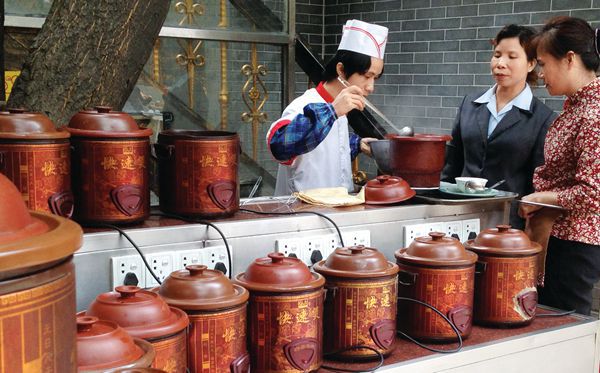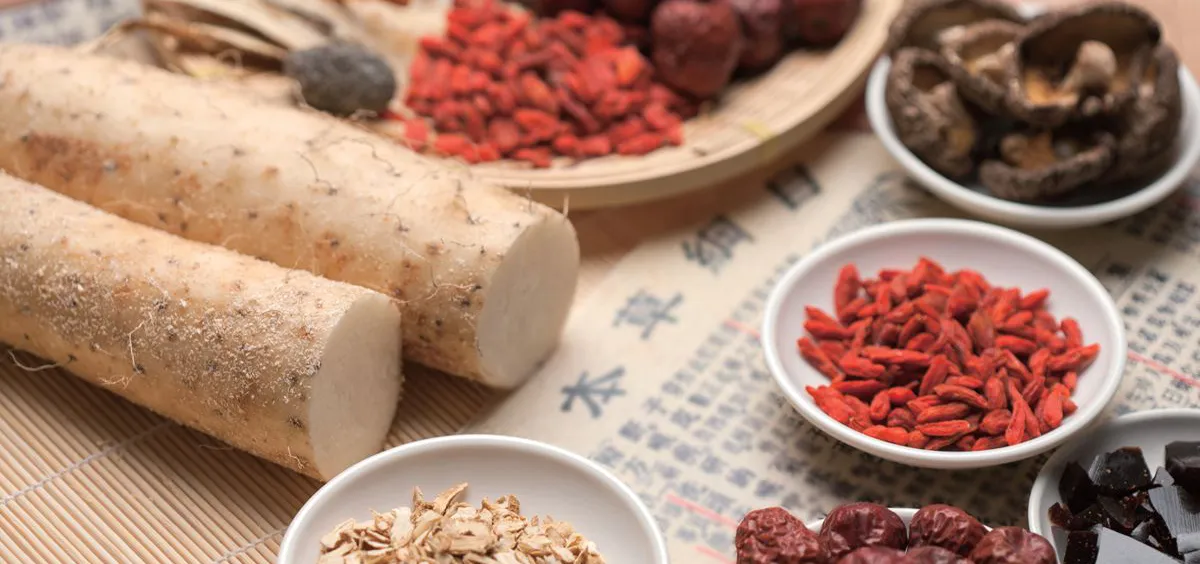Despite safety warnings, fans of ancient “medicinal diets” try to eat their way to health
For 30-year-old Shi Simin, autumn is always a season of anxiety. Every year, her Yunnan townsfolk cook dried slices of the monkshood plant, or fupian (附片), into their meals to boost their immunity.
Shi’s parents are keen participants, but there’s a problem: “If you don’t cook them the right way, medicines like fupian poison people,” Shi says.
In 2016, Yunnan’s Center of Disease Control reported 25 cases of self-inflicted poisoning as a result of home-cooked “medicinal diets” (药膳, yaoshan) containing fupian and shouwu (首乌), a fleece flower root. Despite warnings from local food and drug officials, “people are getting poisoned every year, but they still eat it,” says Shi. “It’s a tradition.”
The practice of yaoshan goes back at least as far as the Zhou dynasty (1046 – 256 BCE), when royal families employed “dietetic doctors” (食医) to prepare healthy diets. Though similar advice is mentioned in ancient texts such as the Inner Canon of the Yellow Emperor, the term was first recorded in the Han dynasty’s Legends of Virtuous Women, which depicted a woman preparing a yaoshan meal for her sick stepson.

A homemade yaoshan soup with chicken and medicinal herbs
The practice persists today. While stipulating that “food must not contain medical substances,” China’s food safety laws make exceptions for “materials that have traditionally served as both food and medicaments.” These yaoshan dishes may be common homemade cures, such as a lily root and lotus seed porridge to relieve heat and soothe the nerves, or restaurant staples like “ginseng chicken soup.”
In Bozhou, the Anhui birthplace of legendary physician Hua Tuo, tourists can try the “Cao Fish Head.” Allegedly prescribed by Hua to cure the warlord Cao Cao’s headaches, the dish contains a remarkable 32 yaoshan herbs including fuling fungus, Chinese angelica, and root of the gastrodia plant. According to traditional Chinese medicine (TCM) experts, healthy dishes should be distinguished by their attractive color, flavor, taste, and presentation—yaoshan chefs must prepare food that not only does good, but looks (and, crucially, smells) good.
It’s not easy to do so, since only certain TCM ingredients can be used—a list of “edible and pharmaceutical substances,” last revised by the National Health Commission in 2018, contains 109 approved ingredients. “Ordinary chefs may only make yaoshan using ingredients on the list, which are classified as ‘medicinal diet for health enhancement (食补药膳),’” Yang Rui, president of China Association of Health Protection Food (CAHPF), tells TWOC.
In practice, though, it’s difficult for ordinary people to identify all 109 items. Because yaoshan has its roots in dietotherapy, the belief that diseases can be treated by diet, few people realize that the practice requires regulation. “Chinese people have traditionally had faith in the medicinal value of food, as they believe that food and medicine share the same origin,” says Yang.

Medicinal soup is a staple of Cantonese cuisine
Physician Ge Hong of the Jin dynasty recorded many food-based treatments in his Handbook of Prescriptions for Emergency, including “raw pear juice to cure cough,” “red bean soup to treat ascites,” and “fermented soy beans with wine for beriberi.” In the Tang dynasty, physician Meng Shen collected and recorded 241 medicated diet prescriptions, and completed China’s first monograph on this subject, titled Materia Medica for Dietotherapy. Folk diets are even more prevalent: lou fo leng tong (老火靓汤) is a common Cantonese soup recipe that calls for Chinese angelica and wolfberries, said to improve digestion and general health. In Fujian, herbs can be bought at the morning vegetable market for minor illnesses. “These folk recipes rely on word of mouth, and have become part of local people’s daily life,” Yang explains.
Since 2014, CAHPF has provided 405 standardized yaoshan formulas for restaurants and enterprises which produce nutritional powders and food supplements. One Hebei enterprise has created a set of 12 powdered porridge mixes using CAHPF-approved ingredients such as ginseng, wolfberry, and lily, that purport to raise energy levels, and even treat throat and lung problems caused by smog.
However, only 23 items have been added to the edible pharmaceutical substances list in the last 17 years. Chinese law prohibits restaurants from using the word “yaoshan” in their name—though their menus are allowed to claim dishes are “medicinal.” Manufacturers cannot advertise “curative effects” on herbal supplements, nor prescribe them for any particular demographic.
Yet there’s still a lack of standards and coordination between regulators, making controversies inevitable. In April 2009, a Hangzhou consumer suffering a gastric ulcer sued herbal tea brand Wong Lo Kat, claiming that a TCM ingredient, prunella vulgaris, had been illegally added to the beverage. Though China’s Center for Disease Control confirmed that the herb was not on the approved edible pharmaceuticals list, the Ministry of Health countered that Wong Lo Kat’s recipe had been approved four years earlier and proved harmless. The herb was added to the list in 2014.
The CAHPF has been running courses for yaoshan producers, but short-term training is far from enough to produce real expertise. “The problem is that chefs don’t understand TCM science, and doctors don’t cook,” laments Yang.
Yang hopes more mainstream recognition of yaoshan culture, including updates to the list of edible pharmaceuticals, will aid public understanding of the benefits of correct medicinal diets. Still, he emphasizes, “We can’t mislead consumers to feel that eating yaoshan is a substitute for seeing a doctor.”
Eating Medicine is a story from our issue, “The Good Life.” To read the entire issue, become a subscriber and receive the full magazine.












